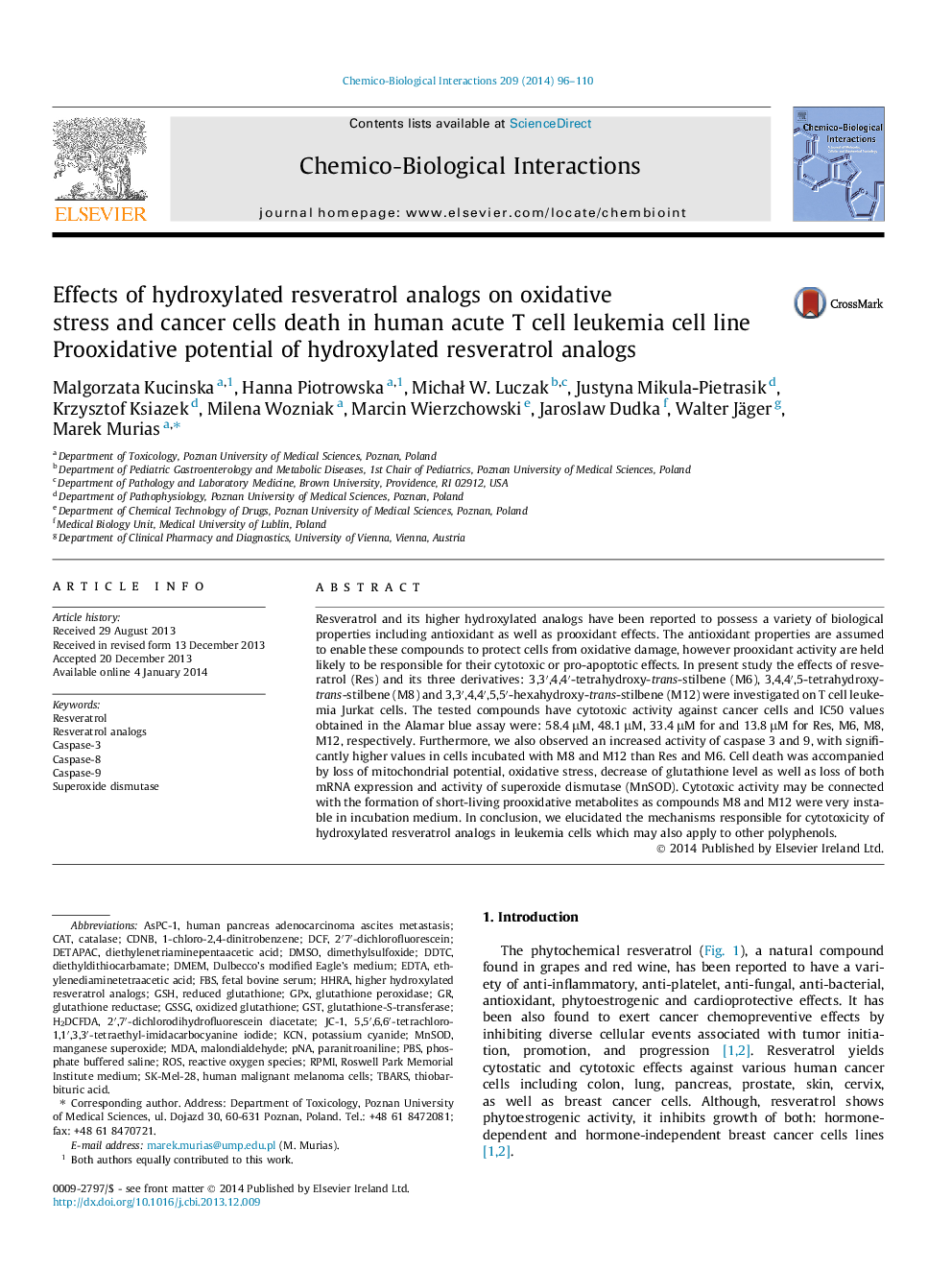| Article ID | Journal | Published Year | Pages | File Type |
|---|---|---|---|---|
| 5848078 | Chemico-Biological Interactions | 2014 | 15 Pages |
Abstract
Resveratrol and its higher hydroxylated analogs have been reported to possess a variety of biological properties including antioxidant as well as prooxidant effects. The antioxidant properties are assumed to enable these compounds to protect cells from oxidative damage, however prooxidant activity are held likely to be responsible for their cytotoxic or pro-apoptotic effects. In present study the effects of resveratrol (Res) and its three derivatives: 3,3â²,4,4â²-tetrahydroxy-trans-stilbene (M6), 3,4,4â²,5-tetrahydroxy-trans-stilbene (M8) and 3,3â²,4,4â²,5,5â²-hexahydroxy-trans-stilbene (M12) were investigated on T cell leukemia Jurkat cells. The tested compounds have cytotoxic activity against cancer cells and IC50 values obtained in the Alamar blue assay were: 58.4 μM, 48.1 μM, 33.4 μM for and 13.8 μM for Res, M6, M8, M12, respectively. Furthermore, we also observed an increased activity of caspase 3 and 9, with significantly higher values in cells incubated with M8 and M12 than Res and M6. Cell death was accompanied by loss of mitochondrial potential, oxidative stress, decrease of glutathione level as well as loss of both mRNA expression and activity of superoxide dismutase (MnSOD). Cytotoxic activity may be connected with the formation of short-living prooxidative metabolites as compounds M8 and M12 were very instable in incubation medium. In conclusion, we elucidated the mechanisms responsible for cytotoxicity of hydroxylated resveratrol analogs in leukemia cells which may also apply to other polyphenols.
Keywords
CATGSSGSK-Mel-28DETAPACDDTCResveratrol analogsPNAAsPC-1GPXGSTGSHTBARS2′7′-dichlorofluoresceinRPMIDcfCDNBMDAHHRAMnSODFBSDMEMPBSJC-11-chloro-2,4-dinitrobenzene2′,7′-dichlorodihydrofluorescein diacetateDMSOH2DCFDAKCNROSEDTAEthylenediaminetetraacetic acidThiobarbituric acidDiethylenetriaminepentaacetic aciddiethyldithiocarbamateDimethylsulfoxideResveratrolfetal bovine serumSuperoxide dismutasePhosphate buffered salinemalondialdehydeDulbecco’s modified eagle’s mediumRoswell Park Memorial Institute mediumpotassium cyanideCatalaseCaspase-3Caspase-8Caspase-9reduced glutathioneglutathione-S-transferaseoxidized glutathioneglutathione reductaseglutathione peroxidaseReactive oxygen species
Related Topics
Life Sciences
Environmental Science
Health, Toxicology and Mutagenesis
Authors
Malgorzata Kucinska, Hanna Piotrowska, MichaÅ W. Luczak, Justyna Mikula-Pietrasik, Krzysztof Ksiazek, Milena Wozniak, Marcin Wierzchowski, Jaroslaw Dudka, Walter Jäger, Marek Murias,
